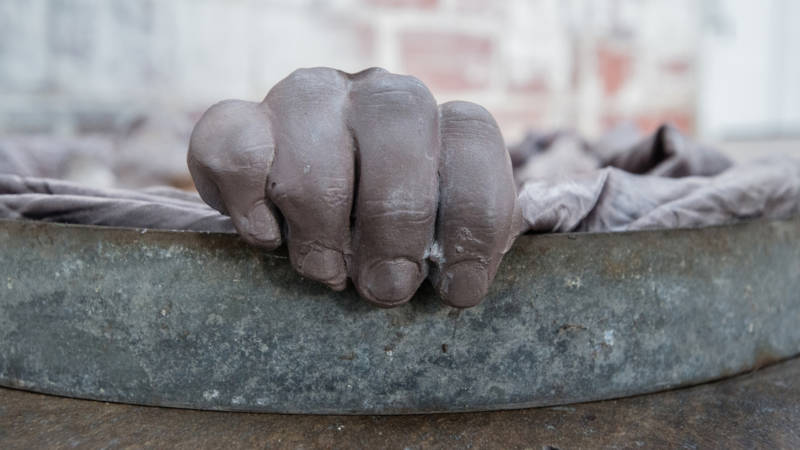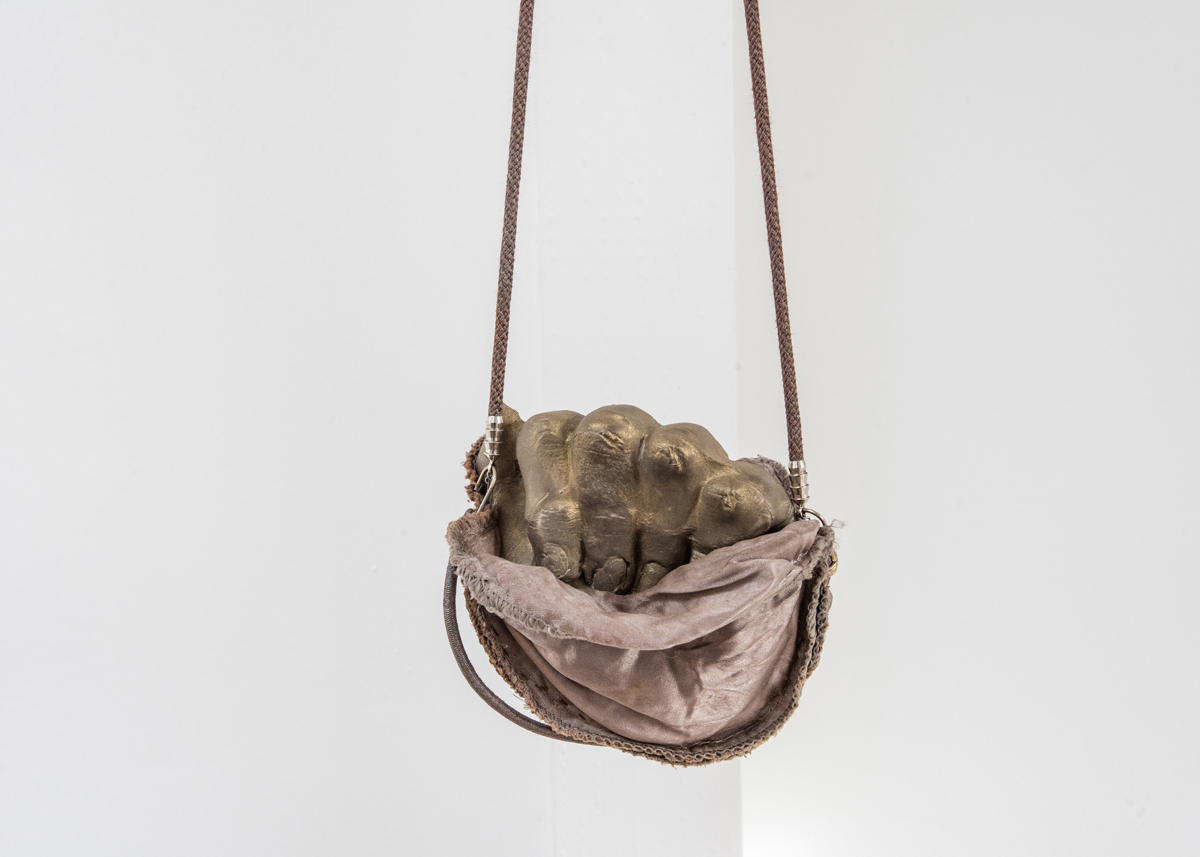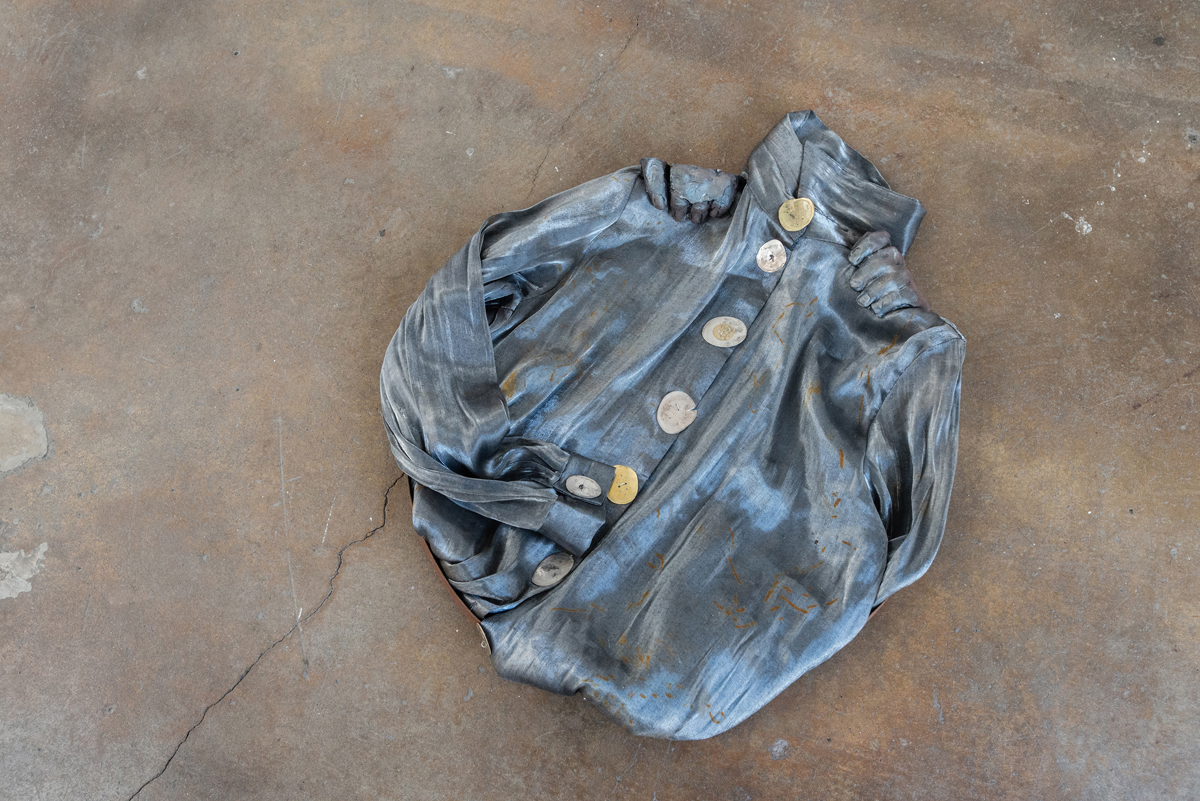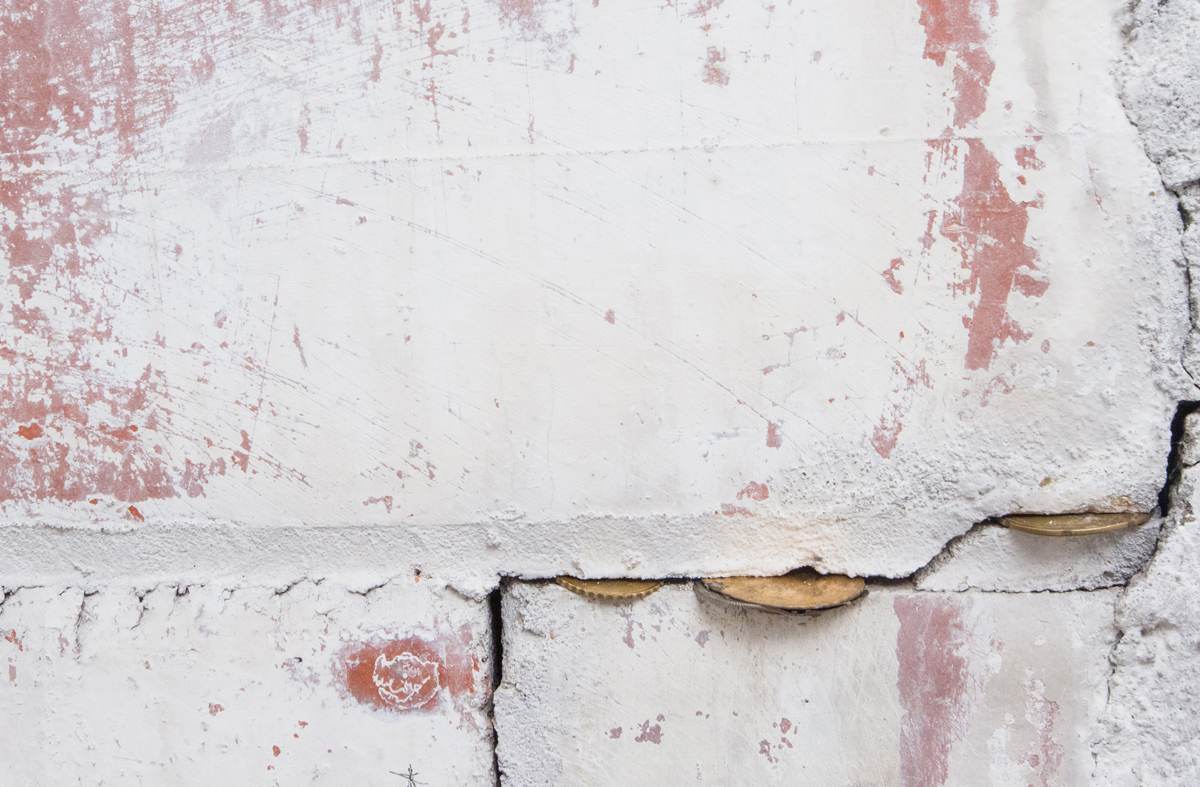A freight train barrels down the tracks and artist Jenine Marsh sits and waits. She waits first for the deep vibrations. Then she waits for the sounds that come all at once—of crashing cars and wheels—and for the rush of heat and air the train unleashes.
Marsh is waiting, usually in a rail yard near her Toronto studio, for another sound, an extra noise, she calls it, of metal on metal, as the wheels roll mercilessly over the line of coins she’s placed along the tracks. Pennies, dimes, loonies and toonies scatter into the surrounding dirt and detritus, and Marsh goes in search of the flattened coins, now deformed, defaced and smooth.
Train-pressed coins have been a hobby for Marsh since childhood and a recurring element of her work since 2015. They are present—or strongly evoked—in every aspect of her solo exhibition at Oakland’s Interface Gallery, a room at the center of the world surrounded by the noise of men, on view through Saturday, Dec. 2.
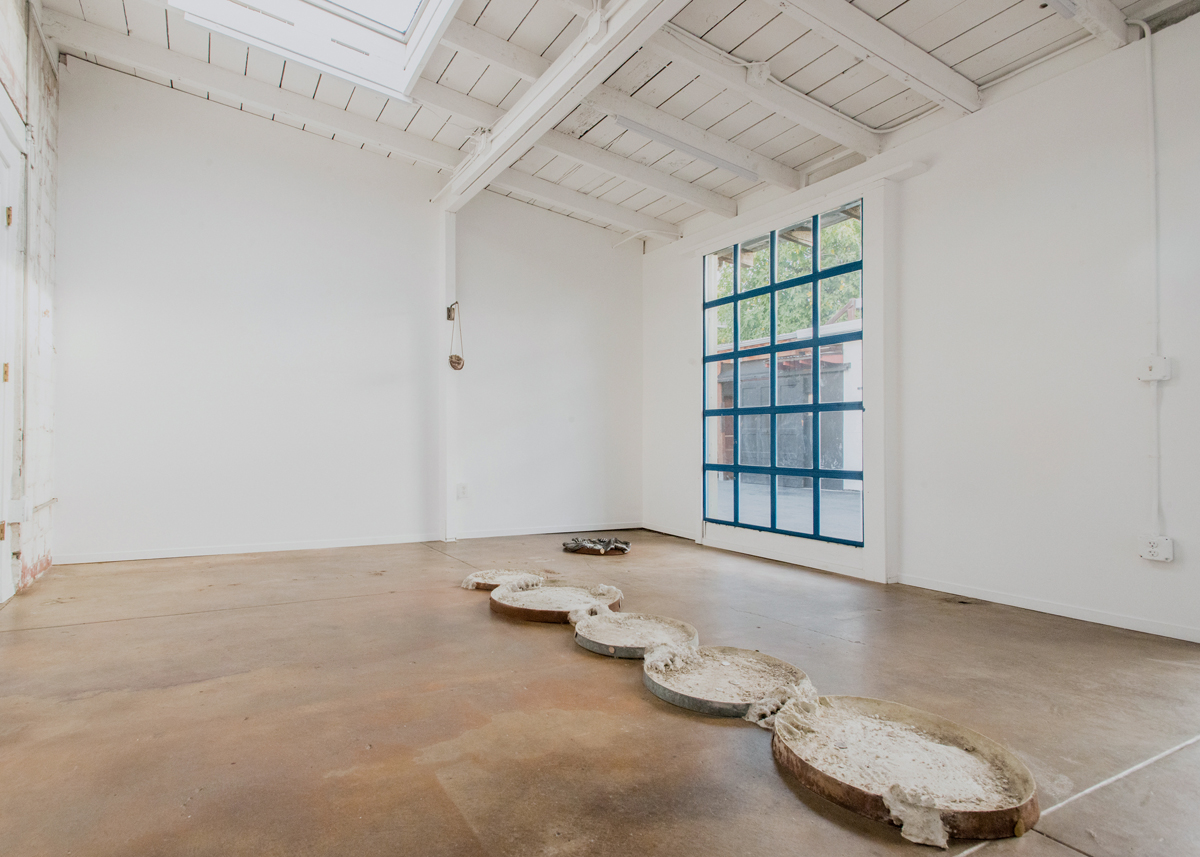
The seven works in the installation operate on shifting registers of heft and human hand but share materials and metaphors—coins, fingers and fists, cement, solder, soil—revealing Marsh’s deeper questions about exchange and value. These questions exist within a system defined by constraints and that, like fiat currency, is predetermined, empty—a system with seemingly little hope for intervention.
Interface is small and Marsh’s work fills the space in two ways. Some pieces assert their place (bold, inscrutable sculptures on the floor of the gallery, to be carefully walked around) while others insinuate (thin and small objects made of wire, faint but thoroughly dispersed across the back wall and a nearby skylight).
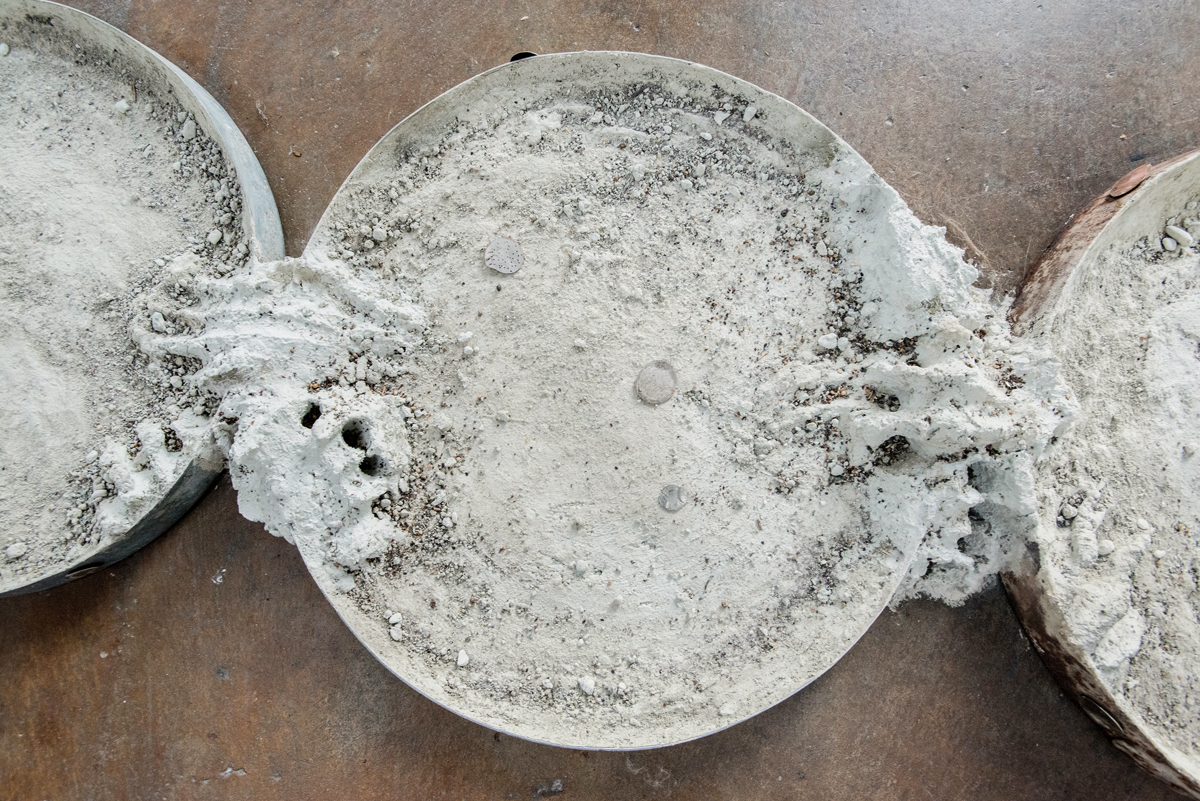
A work titled the trespass is the former: five, 18-inch, found metal hoops lay flat in a line, filled with cement mixed with soil and wildflower seeds (a doctored guerrilla-gardening seed bomb recipe), and scattered with train-pressed coins, more soil and gravely bits. Each hoop is linked to the next by more cement spilling over the rims; the cement is furrowed, ridged and pitted, like the imprints of hands or paws or claws on an industrial wasteland.
